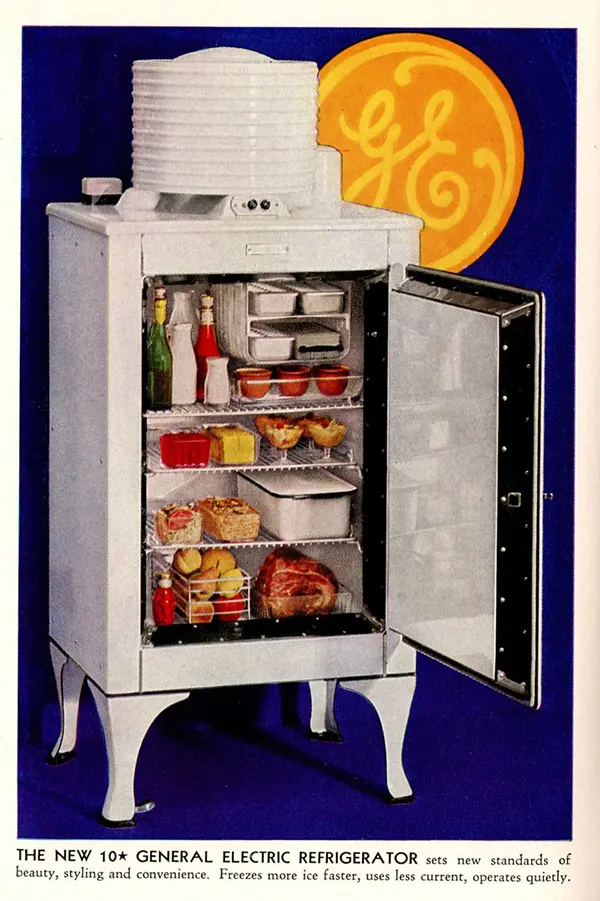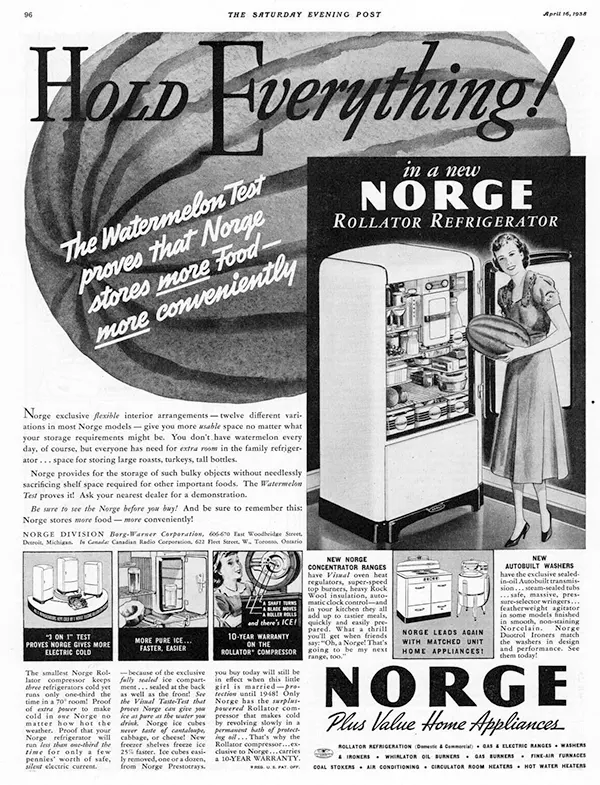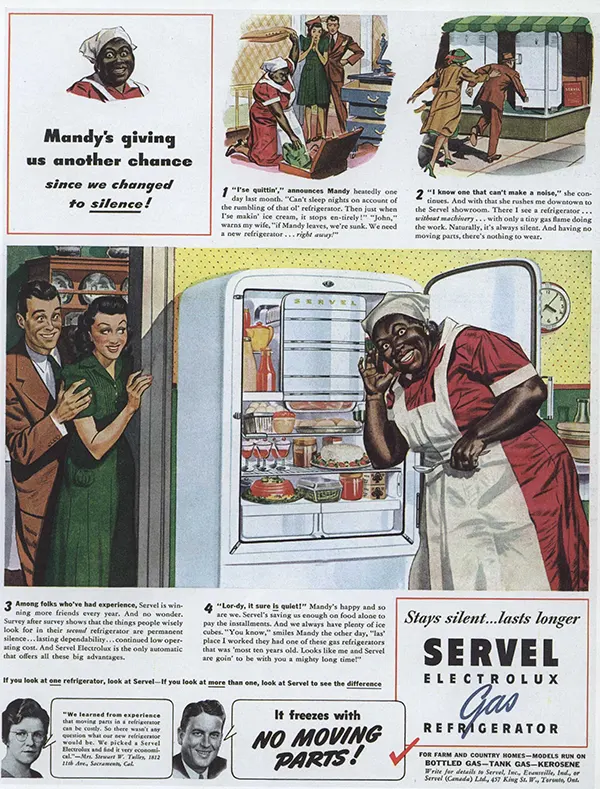Can you imagine life before the hum of a refrigerator was just part of your home’s background noise? Back in the early 20th century, having a fridge wasn’t a given — it was a luxury. A real conversation starter. These vintage refrigerator photos from the 1920s through the 1950s take us on a visual journey of innovation, design, and changing American lifestyles. From blocky iceboxes to pastel beauties with chrome handles, each model tells a story.
Let’s open that retro door and explore how refrigeration evolved into the kitchen’s most essential centerpiece.

The Icebox Era: Before Electricity Changed Everything
Long before the hum of compressors and the click of automatic ice makers, people relied on iceboxes. These were insulated cabinets that used large blocks of ice to keep food cold. It wasn’t the most convenient method, but it worked — barely. You had to refill the ice regularly, and it couldn’t guarantee consistent cooling.
Homes in the late 1800s and early 1900s treated these iceboxes as prized possessions. Delivered ice was common in cities, and milkmen worked in tandem with icemen. Still, spoilage was an everyday concern. And then came the electric revolution.
Video: Step into 1956 with this classic Frigidaire Refrigerator Ice Box commercial—watch now!
1920s Innovation: Enter the Monitor-Top Refrigerator
By the mid-1920s, the tide was turning. Enter General Electric’s game-changer: the Monitor-Top refrigerator. Introduced in 1927, this unit was the first affordable, mass-produced electric refrigerator. Its unique look — with the compressor mounted above the cabinet — made it iconic.
It wasn’t just about looks, though. This fridge represented freedom from daily ice deliveries and gave families the confidence to stock fresh food longer. Plus, it was the start of branding refrigeration as a symbol of status and progress.
Around this time, safer refrigerants like Freon replaced toxic alternatives like ammonia and sulfur dioxide, making refrigerators both household-friendly and reliable.
1930s and 1940s: Streamlined Design and Middle-Class Access
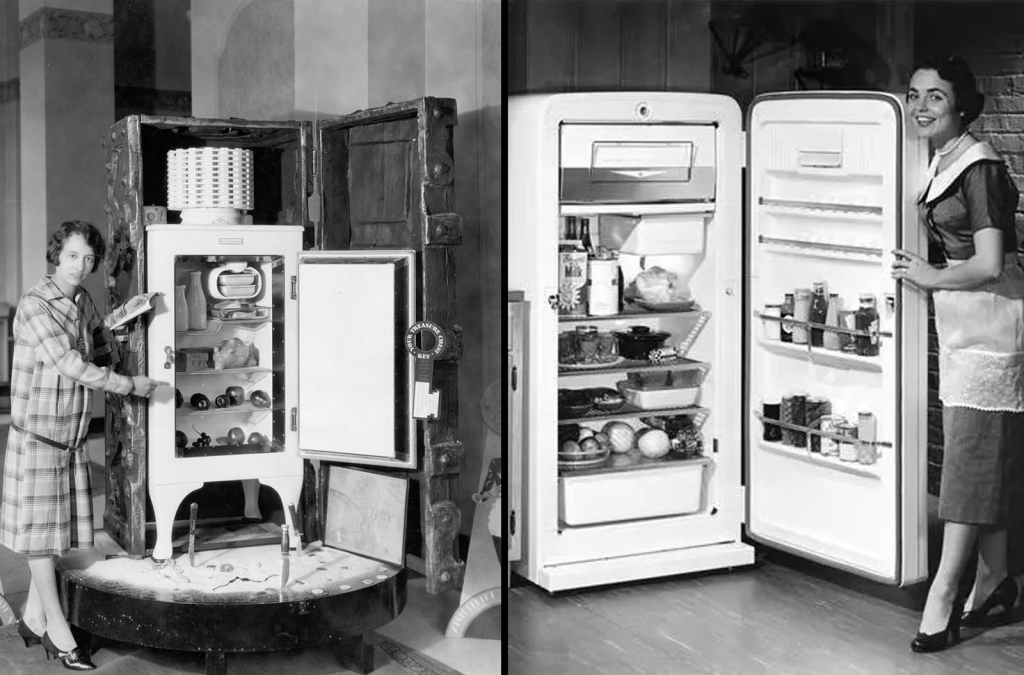
As the Great Depression gave way to wartime recovery, refrigerator technology became more refined and affordable. Manufacturers such as Frigidaire and Kelvinator started offering models with sleeker shapes, porcelain exteriors, and more energy-efficient systems.
This was the age of transition from function-only to form-meets-function. Refrigerators became smaller and better suited for tight urban kitchens. Many units introduced new features like interior lighting, temperature control, and built-in freezer compartments — though the freezers were still tiny compared to today’s standards.
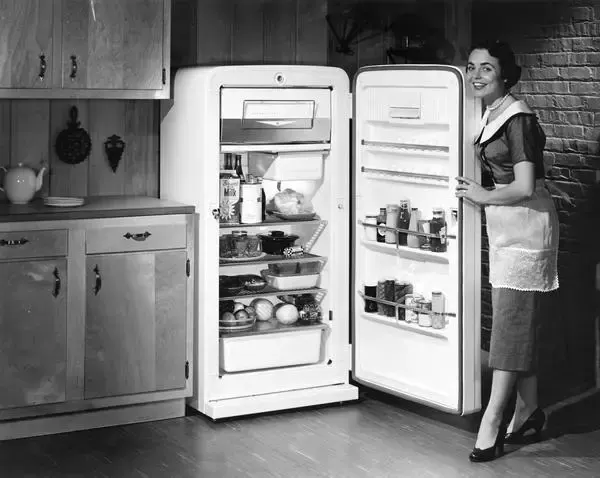
During World War II, refrigerator production slowed as factories focused on wartime manufacturing. But the post-war boom was about to change everything.
The 1950s: Color, Curves, and Convenience Take Over
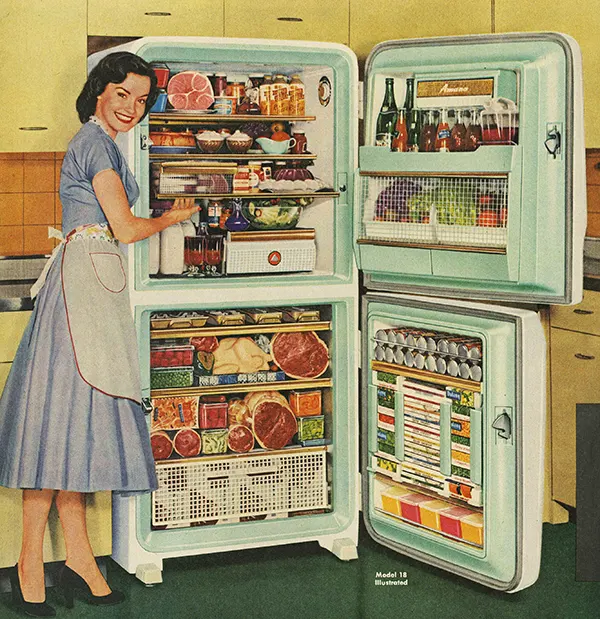
Welcome to the golden age of refrigerator design. The 1950s marked a cultural shift in American households. Suburbia was booming, home ownership was on the rise, and families craved modern conveniences — and aesthetics to match.
Gone were the stark white finishes. Refrigerators now came in vibrant pastels — baby blue, mint green, butter yellow, and even flamingo pink. Curved silhouettes, chrome accents, and futuristic logos turned every kitchen into a style statement.

But the beauty wasn’t just skin-deep. These models introduced groundbreaking features like automatic defrosting, spacious freezer compartments, and even built-in ice cube trays. Many were marketed with slogans like “Now with more food space!” or “The modern woman’s kitchen companion.”
The fridge became more than just a box that kept things cold — it became a symbol of modern American life.
Refrigerator Ads: Selling the American Dream
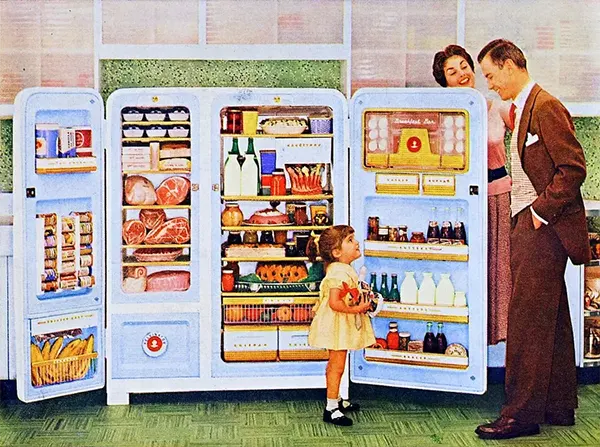
Want to know how the culture shifted? Just look at the ads.
Vintage refrigerator advertisements were masterpieces in visual storytelling. They often showed beaming housewives pulling out perfectly chilled desserts, or happy children grabbing cold milk after school. The message was clear: owning a refrigerator meant you’d “made it.”
Companies like GE, Westinghouse, and Crosley competed fiercely for market share, each one promising better design, more space, and innovative features.
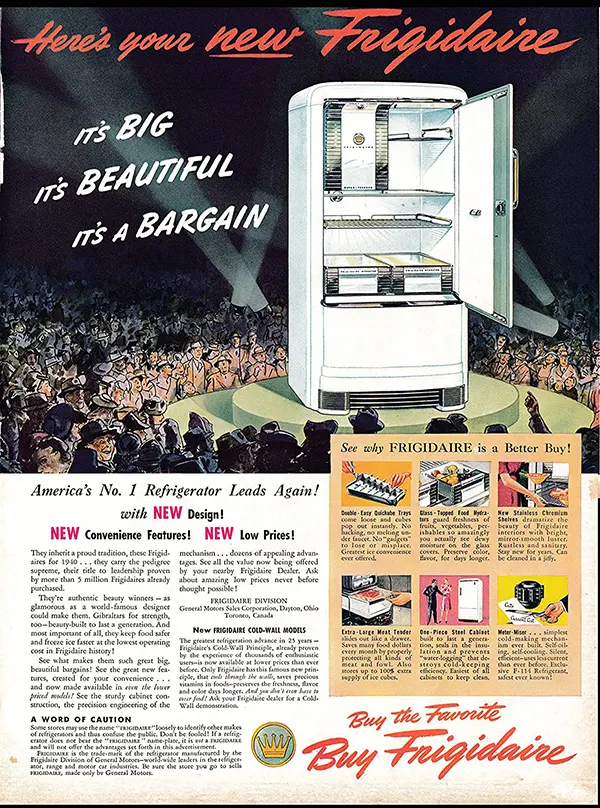
These ads weren’t just about appliances. They sold lifestyle. They tied refrigeration to progress, prosperity, and the idea of a better future.
From Luxury to Necessity: Refrigeration Changes the Way We Live

The refrigerator did more than keep leftovers from spoiling. It transformed the American home. Families could store food for days, meaning fewer trips to the market. This helped support the rise of supermarkets and batch cooking.
Meal planning became easier. Home cooks had more freedom. Suddenly, the fridge was where midnight snacks lived, where moms displayed report cards, and where cold soda waited after a long summer day.
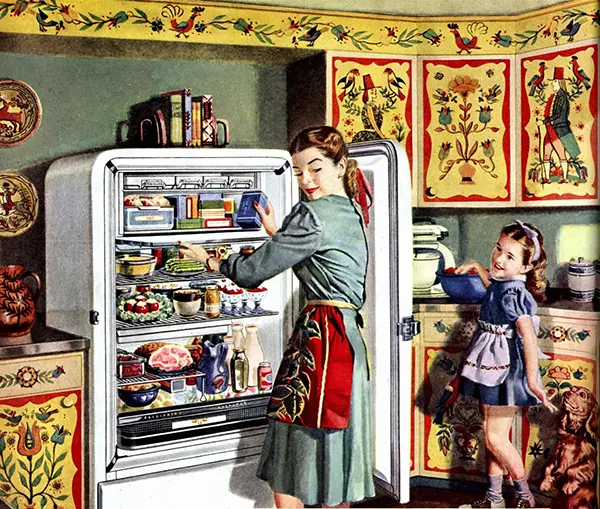
By the late 1950s, refrigerators had become so common that not having one seemed odd. That’s how quickly things changed — from occasional luxury to must-have essential in just a couple of decades.
Why Vintage Refrigerator Photos Still Mesmerize Us
Video: See a 1950s vintage fridge brought back to life in this restoration video!
There’s something undeniably charming about vintage fridges. Maybe it’s the curvy silhouettes, or the bold typography etched into the chrome handles. Or maybe it’s the nostalgia — the way those images remind us of simpler times, slower meals, and the magic of innovation.
Whether it’s a 1930s unit with a rounded door or a pink 1950s beauty with a built-in freezer, these photos remind us of how far we’ve come — and how stylish practicality once was.
Collectors today still hunt for these retro treasures, restoring them to their original glory or even converting them for modern kitchens. The love for vintage refrigerators proves that sometimes, the old ways really were cooler.
Conclusion: The Refrigerator’s Rise from Icebox to Icon
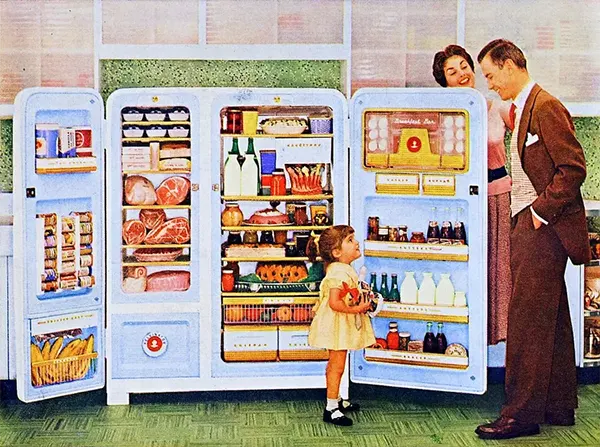
From the sweaty struggle of hauling ice to the colorful confidence of a post-war kitchen, the refrigerator’s evolution between the 1920s and 1950s tells a powerful story of innovation, convenience, and cultural transformation.
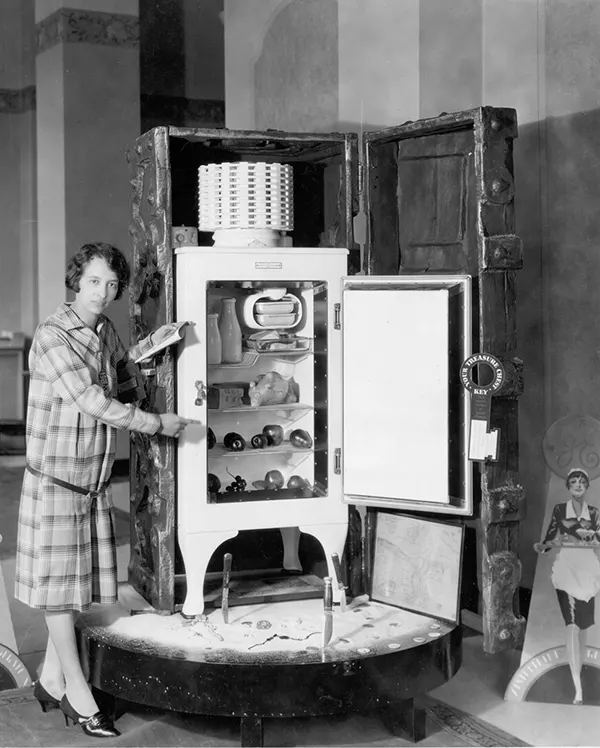
These appliances weren’t just machines. They were milestones — turning points in the way we cooked, shopped, lived, and shared meals. Looking back at these vintage refrigerator photos, we don’t just see history. We see how something so practical became deeply personal — a quiet but powerful part of everyday life.
